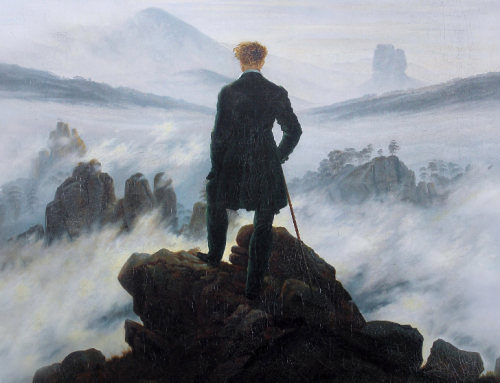Would it be possible to steal three centuries from the Medieval world?
Well at least their perception of time…
This feat may sound ridiculous, but it would have been much easier to pull off when most people were illiterate, had little understanding of the calendar, and were both more fearful and more trusting of their rulers.
Back in the Middle Ages, if you were a ruler and really wanted it to be 300 years later…then perhaps you could teleport your whole kingdom into the future just by decree. Besides, anyone who opposes you could be threatened with death.
Some believe that this time heist did happen, and that it was orchestrated by the Holy Roman Emperor Otto III, Pope Sylvester II, and the Byzantine Emperor Constantine VII. If true, this lands modern day in the 1700’s instead of the 2000’s.
(Anyone who predicted a doomsday in the last 300 years must love this theory.)
Why would the three most powerful rulers in Europe do this? Hubris. Rulers are rarely short of ego.
These rulers were no exception, but adding 297 years to the Julian calendar and fabricating three centuries of history in order to have your rule coincide with the year 1000 AD would be a new trick. Supposedly, this landmark date would bring validity to their rule and solidify their regions.
In order for this theory to be true, many historical events and figures, most notably Charlemagne and the entire Dark Ages, had to have been completely made up.
If we were building a case in a court of law, the motive behind this heist would be weak.
The proposed evidence of this dating discrepancy is the following:
- Inconsistencies in Architecture chronology
- Sparsity of writings, artifacts and innovation from the Dark Ages
- The adjustment from the Julian to the Gregorian calendar
The main theme behind all of this is the idea that the Dark Ages just really sucked. The Middle Ages which ranged from 500 to 1500 AD had many advancements in the later Renaissance, but the Dark ages, which ranged from 500 to 1000 AD, were much less notable. Our period of phantom time falls right into the aptly named Dark Ages, and the conspiracy theorists believe that this stagnation was due to its fabrication.
However, traditional historians maintain that fall of the Roman Empire is what led to the somewhat disarray of Europe during this time and that the term Dark Ages is actually a misnomer. But, if you take a look at the innovations of the Middle ages, it is almost entirely backloaded in the later Renaissance. The Dark Ages had a few advancements in farming but otherwise it was a period of rebuilding mixed with barbarian invasion. But still there is debate about just how dark the Dark Ages were in actuality.
 Even the historians of the Renaissance argued about the ages leading up to their time. The protestants aligned with the Tuscan Historian, Petrarch, who believed the corruption of the Roman Catholic Church is what caused the darkness. On the other hand, the Catholics aligned with Baronius, who portrayed the period as much more enlightened by the harmony of religion made possible by the Catholic Church.
Even the historians of the Renaissance argued about the ages leading up to their time. The protestants aligned with the Tuscan Historian, Petrarch, who believed the corruption of the Roman Catholic Church is what caused the darkness. On the other hand, the Catholics aligned with Baronius, who portrayed the period as much more enlightened by the harmony of religion made possible by the Catholic Church.
It is not much of a stretch to say that political motivations may have been behind the recounting of the history of this phantom time. Even Baronius himself often referred to the shortness of writers from the Dark Ages, giving the entire era a ominous lack of description. Let us not forget that all of history is inevitably fabricated in some sense by those who do the recording.
The architecture during the Middle ages is, at times, inconsistent. Specifically there are some instances of Gothic arches being used centuries before they were thought to have been established, and yet also architecture used by the Roman empire still lingered throughout. The most likely explanation of this is that these buildings were reusing structures and stones from roman architecture while being built upon by later generations.
As far as the calendar itself, when the Pope switch over to the Gregorian calendar from the Julian calendar nearly 500 years later in 1582 A.D. he accounted for a discrepancy of 10 days that lingered from the conversion. However, if you were to account for for the 300 years of the Dark Ages this change should have been 13 days. Theorists are then suggesting that the Pope knew about the conspiracy from 1000 A.D. and accounted for their mischief. However, another explanation is that the Pope made this correction to allow Easter to land on the date agreed upon by the Council of Nicaea.
Where the Phantom Time Conspiracy truly falls apart is when you broaden your horizons in two ways.
The first horizon we look to is the sky itself, astronomy has been used to track time for all of history. During the Dark Ages, specific time markers like eclipses and comets were recorded that fit the cosmic timeline. These accounts also are in line with non-European historical accounts.
The next horizon to look past, is our European centric view of history. This loss of time does not account for history in the Middle East and Asia that is well documented and interwoven with the history of the middle ages in general. In fact, the Middle east was amidst the Golden Age of Islam during the European Dark Ages and made many advancements that were not discovered in Europe until centuries later. This Islamic advancement could also account for some of the inconsistencies in Europe because their idea may have sporadically leaked into European culture.
Lastly, there is Carbon dating placing artifacts in the Dark Ages, coins of Charlemagne, and various other artifacts that can be placed in this time period.
No, the Phantom Time Conspiracy is most likely not correct.
But what is more interesting is the discussion on what people are able to believe and the fluidity of history as a whole. Even today, the accounts of events are politically skewed and manipulated to obtain or maintain power. Perhaps conspiracy theories like these are beneficial for humanity to foster a skeptical populous. We should never be too trusting of history, for it is as fallible as those writing it down.







Leave A Comment